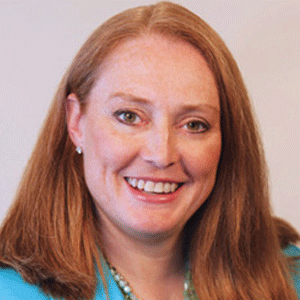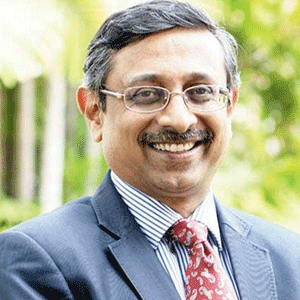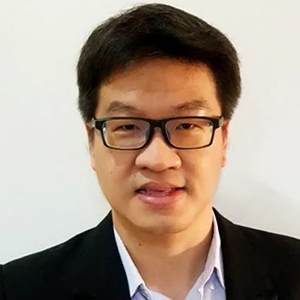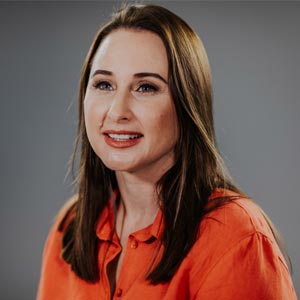THANK YOU FOR SUBSCRIBING

Pam Halligan, Senior HR Manager for IT, GE
Decades ago, Thomas Watson’s famous slogan, “Think,” helped guide IBM on its journey to global leadership in Information Technology. Today, the mantra for IT leaders should be “Rethink.” We need to take a close look at our digital DNA and align our talent with the future needs of our organizations. If we don’t, we’ll be swept out the door, much like the mainframes, minis and client-server architectures of the past.
“CIOs must also have a thorough understanding of their business strategy and priorities so they can leverage technology to solve their organization"s toughest challenges”
Just consider how much the IT world has changed in the past few years, with transformative advances in the cloud, mobile applications, social media and the Industrial Internet. Surely, the pace of innovation will only accelerate as we move into the next phase of our dynamic digital age. So now is a great time to re-imagine the future of IT and develop a new vision for our organizations. Instead of simply supporting our business units, IT leaders must become catalysts, finding innovative and cost-effective solutions to shape new strategies. That starts with identifying and investing in the new model of IT leadership.
Be Open to Change
For CIOs, a key to successfully managing change will be to seek new ideas and insights, while cultivating a flexible mindset. Similar to applying a software open-licensing model, you can expect some surprising new input! CIOs must also have a thorough understanding of their business strategy and priorities so they can leverage technology to solve their organization’s toughest challenges. By rethinking your current approach to IT, you can take advantage of the opportunities that are unfolding every day and build an IT team that reflects the skill sets of tomorrow so you can continue to drive your company forward.
A few ago, GE took a close look at the role of IT in our global organization, and made several strategic decisions. First, we assessed our outsourcing strategy, and decided to bring a number of outsourced skills and functions back in house, giving us more insight into our workforce, control of our intellectual property and ability to respond to our businesses strategic needs. Next, we identified the most important technologies that will shape industry in the foreseeable future.
That rethinking process helped us identify the technical and leadership skills needed for GE to compete and win in areas such as data and analytics, cloud, mobility, cyber security, software and manufacturing technologies. After understanding the needed skill sets, we began recruiting new talent, while partnering with innovative training firms to ensure that our experienced professionals could remain in the forefront of our field.
Developing IT Talent
At GE, developing talent is embedded in our culture and integral to our future growth. And over the past few years we have made major “people investments.” For example, we revamped our Information Technology Leadership Program (ITLP), a two-year technical leadership development program, to give our participants the leadership skills, business acumen and technical aptitude needed to excel. We also partnered with Indiana University’s Kelley School of Business to offer a customized graduate-level educational program as part of ITLP that offers the flexibility for participants to continue working toward an MBA or Master of Science degree following program graduation. The curriculum, delivered by Kelley School faculty, focuses on rapidly disruptive technologies like cloud and mobility. And by working with a university we’ve remained nimble with our curriculum, refreshing our offerings annually to keep pace with changes in technology.
We also launched key partnerships with specialized education institutions to enhance our offerings, provide external perspective and remain on-pace with disruptive changes. Through our partnership with Udacity, a Silicon Valley online training company, we’ve leveraged and introduced their “nanodegree” programs to our entire IT population. Nanodegrees include a combination of virtual training and project work in fields such as web development and data science.
We also developed a partnership with General Assembly (GA), a global educational institution, to develop competency-based credentials through software programming courses that bring participants physically together in contemporary learning environments.
By identifying and training based on competencies recognized by both employers and job seekers, these programs will provide the skills required for careers in the 21st century workplace.
And finally, we resigned our own internal IT Capability Model. Designed by IT for IT, the Model outlines five critical IT domains–Security and Risk, Software, Core Technology, Business Technology, and Data and Analytics, as well as eight essential IT disciplines critical for the 21st century workforce. It is supported by a robust online individual capabilities assessment that employees are encouraged to take at least once a year, and provides access and direct linkages to a robust offering of GE training courses, specialized nanodegrees, and other resources.
The goal of these efforts is simple: to attract, manage, develop, motivate and retain our talented team.
A Digital Workforce
Building a digital workforce for the future has helped GE achieve impressive results. And we believe that a similar talent development strategy can help other companies capitalize on these fast-approaching opportunities as well. Of course, key IT skills will vary from industry to industry. Retail, hospitality and real estate, for example, need professionals who can develop engaging mobile apps and digital and social media campaigns; banking and healthcare companies must meet the IT challenges of operating in highly regulated industries.
Regardless of industry sector, all of us must all lean into change, rethink our roles and build a team with adaptive digital DNA. Only then can we unleash the transformative power of IT.













